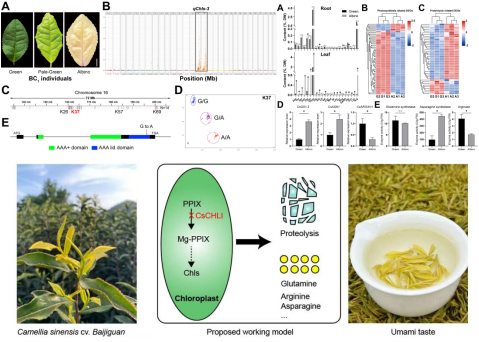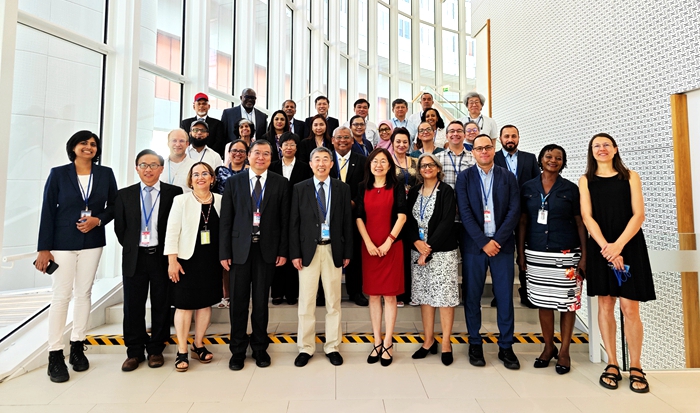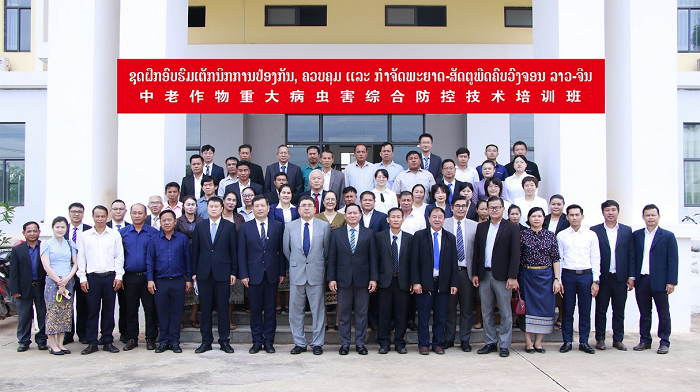Research Progress in Unraveling Genetic Mechanism of Albino Tea Plants
The Tea Research Institute’s Tea Germplasm Resource Innovation Team has recently made new progress in deciphering the genetic mechanism of leaf color variation in tea plants. This research, titled "A Key Mutation in Magnesium Chelatase I Subunit Leads to a Chlorophyll-deficient Mutant of Tea ( Camellia sinensis )," has been published as a cover paper in the Journal of Experimental Botany.
Albino tea plants, characterized by their valuable and rare leaf color mutation, exhibit significant differences in amino acid, tea polyphenol, and caffeine content compared to common green tea cultivars. These distinctive biochemical components play crucial roles in tea plant growth and the quality of tea production. Despite extensive research across various fields aimed at uncovering the formation mechanism of albino tea plants, the genetic mechanism underlying their variation had remained unclear.
To tackle this issue, the research team constructed a genetic segregation population in 2012 using 'Longjing 43' as the maternal parent and 'Baijiguan' as the paternal parent. Genetic mapping results revealed a major-effect QTL in the linkage group 3. To finely map this locus, the team constructed a BC1 population using 'Baijiguan' as the recurrent parent and employed a strategy combining BSA-seq and competitive allele-specific PCR (KASP). Through this approach, they identified a missense mutation in magnesium chelatase I subunit, which caused perturbed function of CsChlI and diminished chlorophyll contents.
Biochemical assays indicated that CsCHLI mutations did not affect subcellular localization or interactions with CsCHLIG and CsCHLD. However, combining CsCHLIA with CsCHLIG significantly reduced ATPase activity. RNA-seq analysis revealed that CsCHLI A -induced photoinhibition promoted proteolysis and elevated amino acid levels in chlorotic leaves. RT-qPCR and enzyme activity assays confirmed the crucial role of asparagine synthetase and arginase in asparagine and arginine accumulation, with levels increasing over 90-fold in albino leaves.
This research provides insights into the genetic mechanism underlying tea chlorosis and lays a theoretical foundation for the development and breeding of new albino tea cultivars.
The co-first authors of the study are Zhang Chenyu, a PhD candidate, and Liu Haoran, a master’s graduate of the institute. Professor Ma Chunlei, Professor Yao Mingzhe, and Chen Jiedan serve as the co-corresponding authors. The study received support from the National Key Research and Development Program of China, Zhejiang Science and Technology Major Program on Agricultural New Variety Breeding-Tea Plant, and the Fundamental Research Fund for Tea Research Institute of the Chinese Academy of Agricultural Sciences.
For further details, refer to the original article publishedat:https://academic.oup.com/jxb/article-abstract/75/3/935/7334114
By Prof. Ma Chunlei (malei220@tricaas.com)

Figure 1. The cover paper in the Journal of Experimental Botany

Figure 2. Fine mapping and functional verification of leaf color variation
-
 Oct 24, 2024Prof. Luxiang Liu Renewed His Term as the Chairman of the Mutation Breeding Network (MBN)
Oct 24, 2024Prof. Luxiang Liu Renewed His Term as the Chairman of the Mutation Breeding Network (MBN) -
 Oct 23, 2024IPPCAAS Wins the 2024 FAO Achievement Award
Oct 23, 2024IPPCAAS Wins the 2024 FAO Achievement Award -
 Oct 23, 2024ICS Hosted the Symposium of China-European Union Nature-based Solutions for Nutrient Management International Cooperation Program
Oct 23, 2024ICS Hosted the Symposium of China-European Union Nature-based Solutions for Nutrient Management International Cooperation Program -
 Sep 30, 2024China-Laos Training Workshop on Integrated Management of Major Crop Pests and Diseases Concludes Successfully in Laos
Sep 30, 2024China-Laos Training Workshop on Integrated Management of Major Crop Pests and Diseases Concludes Successfully in Laos -
 Sep 26, 2024IARRP's AI project research achievement wins the Excellence Award at the Big Data Expo
Sep 26, 2024IARRP's AI project research achievement wins the Excellence Award at the Big Data Expo
